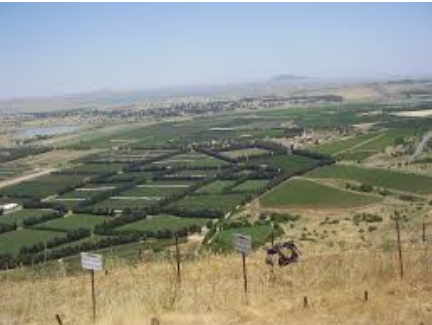Quneitra Governorate is located in southwestern Syria, bordering the occupied Golan Heights. It spans an area of approximately 1,861 square kilometers. The governorate is considered one of Syria's smallest by area, yet it holds significant strategic importance due to its geographical location and complex history, especially with a large portion of its territory under Israeli occupation.
1. Historical Overview
Quneitra boasts an ancient history dating back to antiquity, having been part of trade routes and successive civilizations such as the Phoenicians, Romans, and Byzantines. During the Arab-Israeli wars, particularly in 1967, Israel occupied most of Quneitra Governorate's territory in the Golan Heights, leading to the displacement of its residents and the loss of a significant portion of the land. The main city, Quneitra, was largely destroyed during the conflicts and became a ghost city.
2. What is it Known For?
- Strategic and Political Importance: Its location on the border with the occupied Golan Heights makes it a focal point for political and security conflicts.
- Agriculture: Areas still under Syrian control rely on cultivating grains, fruits, olives, and vegetables.
- Picturesque Mountainous Nature and Valleys that give the governorate distinct natural scenery.
- Modern History: Known for its battles and the sacrifices of its inhabitants in confronting the occupation.
3. Key Tourist and Historical Landmarks
- Old Quneitra City: Largely destroyed during the occupation, it still contains ruins and historical markers.
- Roman and Byzantine ruins in nearby villages such as Khan Arnabah and Baqaatha.
- Stunning natural landscapes in areas under Syrian control.
4. Geography and Climate
The governorate consists of mountainous regions and plains, with many valleys like Wadi Al-Hujair and Wadi Al-Hamidiyeh. Its climate is moderate with rainy winters and hot, dry summers, suitable for seasonal agriculture. Approximately 70% of the governorate's area is under Israeli occupation, which includes most of the plateau's territory.
5. Culture and Customs
The governorate is characterized by its diverse religious culture, including Muslims and Christians, with local customs and traditions that express its long history and its inhabitants' interaction with political and social challenges. Local festivals and religious celebrations play an important role in strengthening social bonds.
6. Economic Activities
The economy primarily relies on agriculture in areas under Syrian control. Economic sectors have been severely impacted by the occupation and conflicts, leading to the displacement of many residents and a decline in commercial and industrial activity. Current efforts are underway to rehabilitate agricultural lands and infrastructure.
7. Major Cities and Towns
- Quneitra (Capital): A semi-deserted city due to the occupation.
- Khan Arnabah
- Nawa (though often associated with Daraa, it's economically linked)
- Baqaatha
- Al-Harra
- Al-Mazraa
8. Infrastructure and Services
The governorate's infrastructure is severely damaged due to conflicts and war, especially in Quneitra city. Health and educational services are limited in liberated areas, with health centers and schools working on rebuilding and development. Local and international efforts are in place to assist in reconstruction and improve living conditions.
9. Current Situation and Challenges
The governorate faces significant challenges in rebuilding destroyed areas, securing essential services, and achieving security and economic stability. The conflict over the Golan Heights and its occupation represents a major obstacle to comprehensive development. Relative stability in liberated areas has provided opportunities for rebuilding, but there is still a long way to go.
10. Prominent Figures
Despite difficult circumstances, the governorate has produced national, political, and cultural figures who have played roles in supporting the national cause and representing the governorate in the Syrian arena.

